UFOs: From psychology to air traffic, are we closer now to an answer?
12 hours ago
By Shola Lee, BBC News
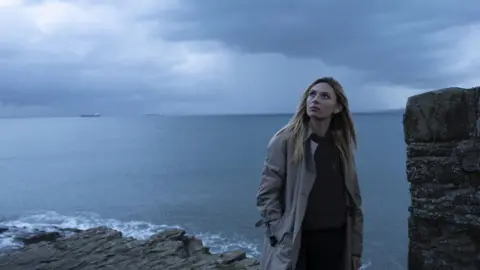 BBC/Twenty Twenty Productions Ltd/Rory Jackson
BBC/Twenty Twenty Productions Ltd/Rory JacksonAs the new series of the BBC’s Paranormal looks into alleged UFO sightings, one aerospace expert says accessible, modern technology puts us in a stronger position than ever to work out what’s going on in the skies above us.
It was a rainy day in Pembrokeshire in February 1977 when a group of pupils from Broad Haven Primary School claimed to see an unidentified flying object (UFO) outside.
David Davies, who was just 10 at the time, remembers his fellow students coming inside throughout the day “trying to alert the headmaster that there was something strange going on”.
The schoolboy was sure there was a logical explanation for what they had seen. “My intention was to go out there and completely prove them wrong,” David says.
But when he went to investigate, he says he saw a “silver, cigar-shaped object” about the size of a bus, with a domed upper section and a “red pulsating glow” on top.
“I had this overwhelming urge to run away,” David says of the sighting that lasted about 10 seconds.
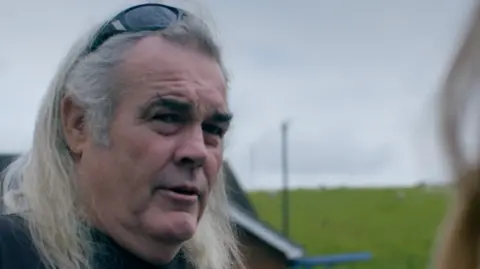 BBC/Twenty Twenty Productions Ltd
BBC/Twenty Twenty Productions LtdThis event in south-west Wales is explored in the latest series of the BBC’s Paranormal. Across four episodes, host Sian Eleri investigates alleged UFO sightings in the late 1970s and early 1980s.
It comes as claims about extraterrestrial life have captured the public imagination yet again. Last year, the US Congress convened a landmark panel on the topic, mysterious monoliths continue to appear in the UK and around the world, and social media is home to viral trends about “alien bodies”. On TikTok, for example, there are more than a million posts with the hashtag “UFO”.
And one aerospace expert tells the BBC that in 2024, thanks to everyone having a phone in their pocket and many people using apps to follow air traffic, we are in “a much stronger position to be able to track what’s known and what’s unknown”.
So is there a simple explanation for why we see UFOs? And should they be investigated?
‘A lot of UFO hunting’
UFOs have held our attention for decades, ever since reports of alleged extraterrestrial debris in Roswell, New Mexico in 1947, the movie The Flying Saucer being released three years later and the Space Race between the United States and the Soviet Union gaining steam throughout 1950s.
And stories about alien life would go on to influence popular culture in the years to come, from Steven Spielberg’s Oscar-winning E.T. in 1982, to The X Files first airing in 1993 and even recent additions like Jordan Peele’s 2022 film Nope feeding into the cultural obsession.
Dr Ciaran O’Keeffe – the head of the school of human and social sciences at Buckinghamshire New University – says there was also a “huge peak of interest” in UFO sightings around the 1980s that resulted in “a lot of UFO hunting”.
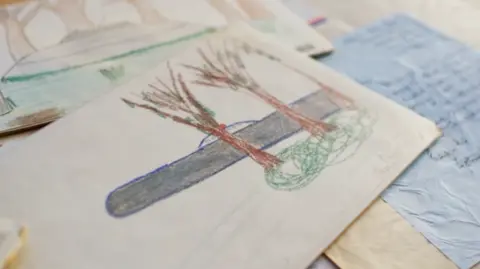 BBC/Twenty Twenty Productions Ltd
BBC/Twenty Twenty Productions LtdReported sightings were covered by media around the world – and the alleged sighting at Broad Haven Primary School was picked up by publications as far as New Zealand.
The Broad Haven incident was one of a wave of sightings in the area in 1977 – dubbed the Dyfed Triangle. In the past, a number of theories have been put forward to explain them, including the work of a “local prankster”.
While sightings like the one in Broad Haven captured mass attention, Dr O’Keeffe says there may be plausible explanations.
“The key fundamental psychological explanation for what’s going on is around eyewitness testimony,” says Dr O’Keeffe, who also consults on the BBC’s Uncanny, adding that eyewitness testimony can be prone to errors.
“The nature of the interviewing of an eyewitness can distort the memory of the event significantly,” he adds, especially if the questioning of a witness is poor. For example, leading questions and exposure to media coverage of an event can be distorting factors.
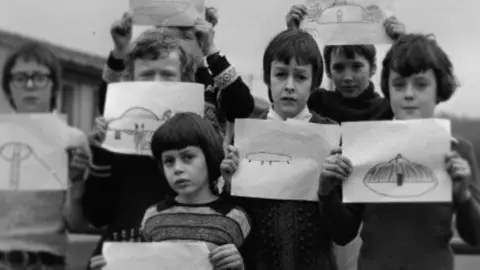 BBC/Twenty Twenty Productions Ltd
BBC/Twenty Twenty Productions LtdHowever, the UFO sighting at Broad Haven Primary School was not just one eyewitness, it was a group of pupils. Here, Dr O’Keeffe explains the idea of “contagion” and group conformity could be behind a mass UFO sighting.
“Contagion is this idea that thoughts, feelings and behaviours can spread amongst a group of people,” Dr O’Keeffe says.
However, David feels he can “rule out” these psychological explanations for the 1977 sighting after the children reportedly drew near identical images of the UFO they had seen.
Before the incident, David adds, he did not have a “big interest in Sci-Fi”. But in the years that followed, he would spend thousands of pounds on books and research materials to understand what happened.
‘Not always publicised’
Dr Ryan Marks, an aerospace engineer who appears in Paranormal, says air traffic in the sky could also offer plausible explanations for UFO sightings, particularly around built-up areas where there are airfields.
According to the RAF Museum, between 1970 and 1990 there were five airfields in south Wales, with one being used as a missile testing range.
“There’s a huge amount of air traffic at any one time and that’s obviously increased over the last 40 years,” Dr Marks explains, adding that there is “always a level of military activity” in the sky and that “not all of this is always publicised”.
In March this year, for example, a US government report concluded that UFO sightings in the US in the 1950s and 1960s were caused by tests of advanced spy planes and space technology.
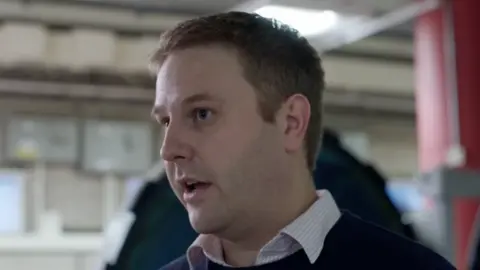 BBC/Twenty Twenty Productions Ltd
BBC/Twenty Twenty Productions LtdAround the mid-1970s to early 1980s, Dr Marks says developments were taking place in the UK exploring hot air balloons and airships – and some “would resemble traditional UFOs”.
He notes, however, these were “small-scale” experiments that did not get outside of the air hangar.
Today, Dr Marks says, “a lot of air traffic movements are recorded,” with free-to-download apps able to identify a plane, where it has come from and its destination. This “digital fingerprint” makes it a lot easier to track what is going on in the sky, he explains.
For his part, David remains confident in his UFO sighting.
“Unless somebody can explain to me what type of aircraft was flying at that time, that was 45-feet long, cigar-shaped and silver – I have no explanation for it,” he says, adding that believing in UFOs can sometimes be “like you’re banging your head against a brick wall, against society”.
“It’s still being dismissed as nonsense,” he says.
The Ministry of Defence (MOD) closed their UFO desk in 2009 after saying it served no defence purpose and was taking staff away from more valuable defence-related activities.
In a statement, an MOD spokesperson added: “In over 50 years, no sightings of extraterrestrial intelligence, Unidentified Flying Objects and Unidentified Aerial Phenomena reported to us indicated the existence of any military threat to the United Kingdom.”



